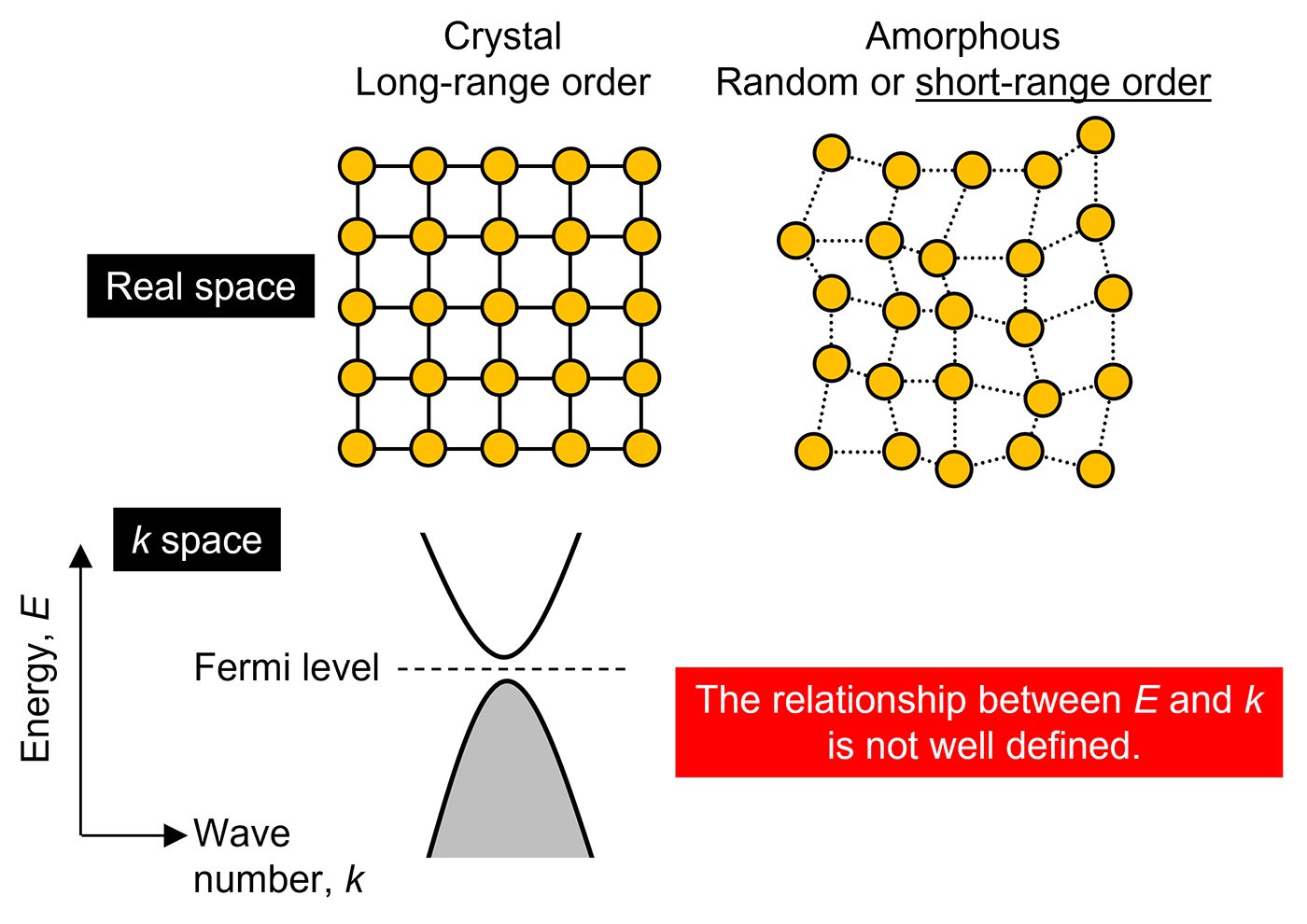A topological amorphous alloy
amorphous
Scientists have dedicated their efforts to studying topological materials, focusing on the shape, or topology, of their electronic structures. These materials exhibit unique properties that have the potential to be harnessed for next-generation devices, despite their invisible nature in real space.
Initially, it was believed that only crystalline materials, characterized by highly ordered atoms arranged in repeating patterns, could exhibit topological physical properties. Amorphous materials, in which atoms are disordered and arranged only periodically over short distances, were considered unsuitable for hosting such properties.

Now, a team of researchers has verified 1 that even amorphous materials can possess these special properties.
The team’s findings reveal that the concept of band topology, previously discussed mainly in relation to crystals, is also applicable and technologically useful in amorphous states.
To validate their discovery, the researchers conducted experiments and model calculations on iron-tin amorphous thin films. They successfully demonstrated that, despite the short-range arrangement of atoms, the amorphous material exhibited the same exceptional effects as crystalline materials, including the anomalous Hall effect and the Nernst effect.
Less ordered materials are easier and cheaper to make compared to ordered crystals, so this opens up new possibilities for developing devices using these materials. This could lead to advancements in sensing technology, which is important for creating the Internet of Things (IoT), where many devices are connected and communicate with each other.
Related articles:
Optical transport in disordered photonic materials
The forgotten fraction in semicrystalline semiconducting polymers
References
- Fujiwara, K., Kato, Y., Abe, H. et al. Berry curvature contributions of kagome-lattice fragments in amorphous Fe–Sn thin films (2023) doi: 10.1038/s41467-023-39112-1 ↩